Introduction
Although we do know a lot about the Romans generally speaking, we know very little about the common man and his daily activities and concerns. Sometimes, we get a glimpse of his existence through funeral and other and inscriptions1 but that is usually limited to a general description of who he or she was, what position the person held and/or what donation he had made for what2.
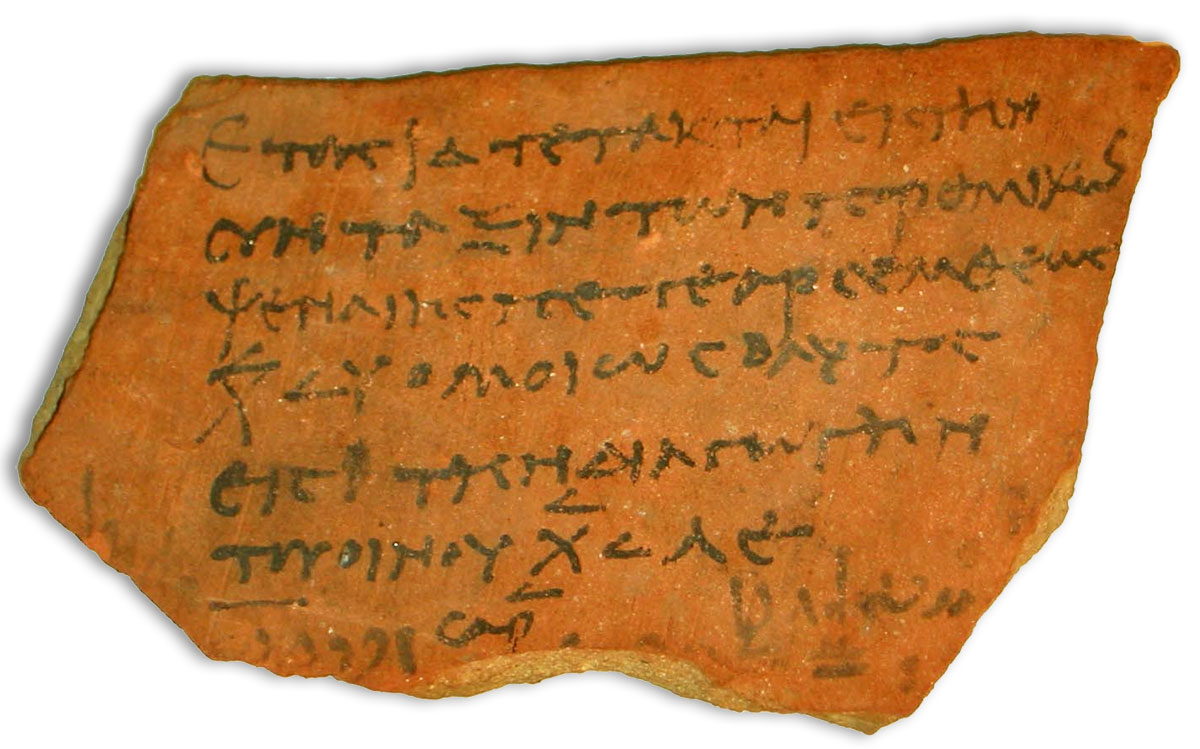
The Egyptians and Greeks knew the so-called "ostrakon", a piece of shrapnel on which a personal message or note was written. The Romans used other materials for this such as pieces of tin or wooden writing tablets. Notes were written on it with ink or scratched with a metal pen (stylus) in a wax layer applied to the tablets. Although most of these wooden tablets unfortunately have perished, there are some places where the wooden tablets have been partially preserved by an anaerobic environment saturated with water. The largest locus of stylus tablets outside of Italy is the Roman army camp Vindonissa (the current Windisch) in Switzerland. Here 612 stylus tablets were found like voices from the various legions that were stationed there between 30 AD. and 101 AD.
In England, too, such voices from the past have been found in around twenty Roman settlements.
Ink tablets
Most of the tablets found in England were stylus tablets, with the exception of those from Luguvalium (modern Carlisle), an army site along Hadrian's Wall and the Vindolanda tablets, the oldest preserved ink-written documents, from 80 - 110 AD 4.
Like Luguvalium, Vindolanda was a Roman fortress in northern England along the Hadrian Wall. The thin wooden writing tablets in postcard format were written with carbon-based ink and dealt with official military affairs as well as personal messages from or to the people in the garrison, their families and slaves. The best known document is tablet 291 in which the wife of Aelius Brocchus, Claudia Severa, invites her friend Sulpicia Lepidina for her birthday. If we assume that this tablet was written by Claudia herself, then it is the oldest known letter written in Latin by a woman.
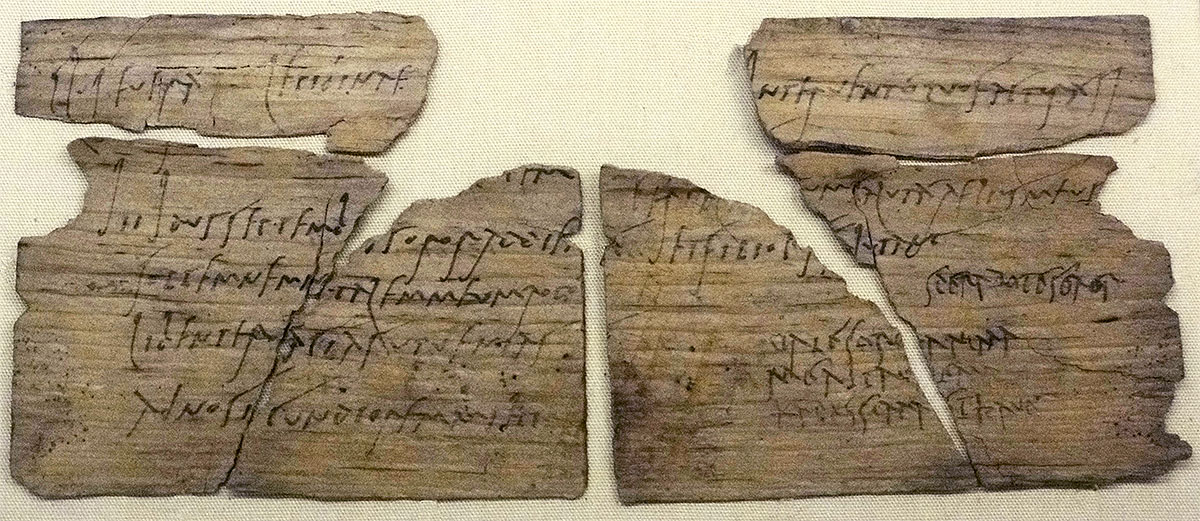
|
tablet 1 tablet 2 On the backside of tablet 1 |
Translation Vindolanda tablet 291: "Claudia Severa to her Lepidina |
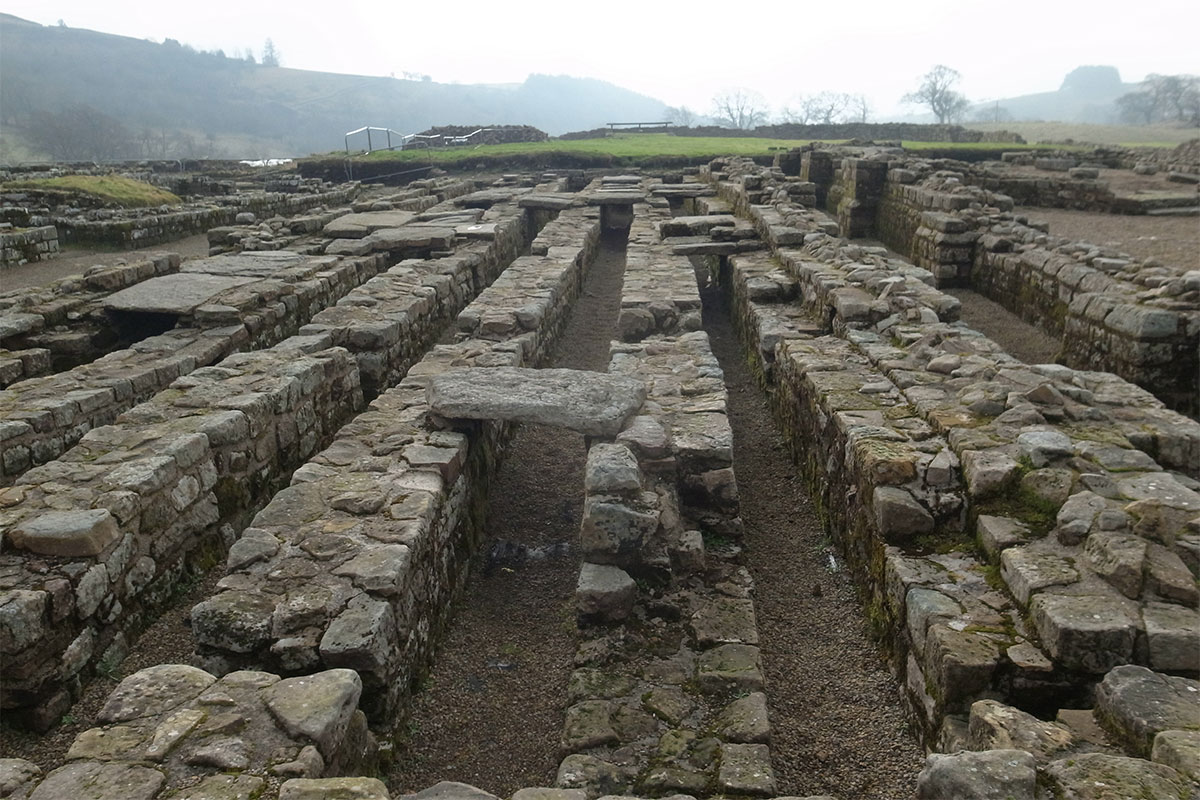
The many letters written in a cursive form of Latin shed light on the most basic things in Roman life in the beginning of our era. Another tablet for example shows us that Roman soldiers were wearing underpants (subligaria).
The many written messages also tell something about the level of literacy in Roman England. Perhaps partly because of this, the Romans felt superior to the local population whom they called denigrating in one of the letters Brittunculi (a reduction of Britto) or little Britons.
The text of 752 ink tablets from Vindolanda has been deciphered, translated and published6. Almost all tablets were described with ink and therefore used only once. The writing tablets, found not so long ago during the excavations in London on the site where the new European headquarters of Bloomberg L.P. would be built, are different.
THE WALBROOK EXCAVATIONS
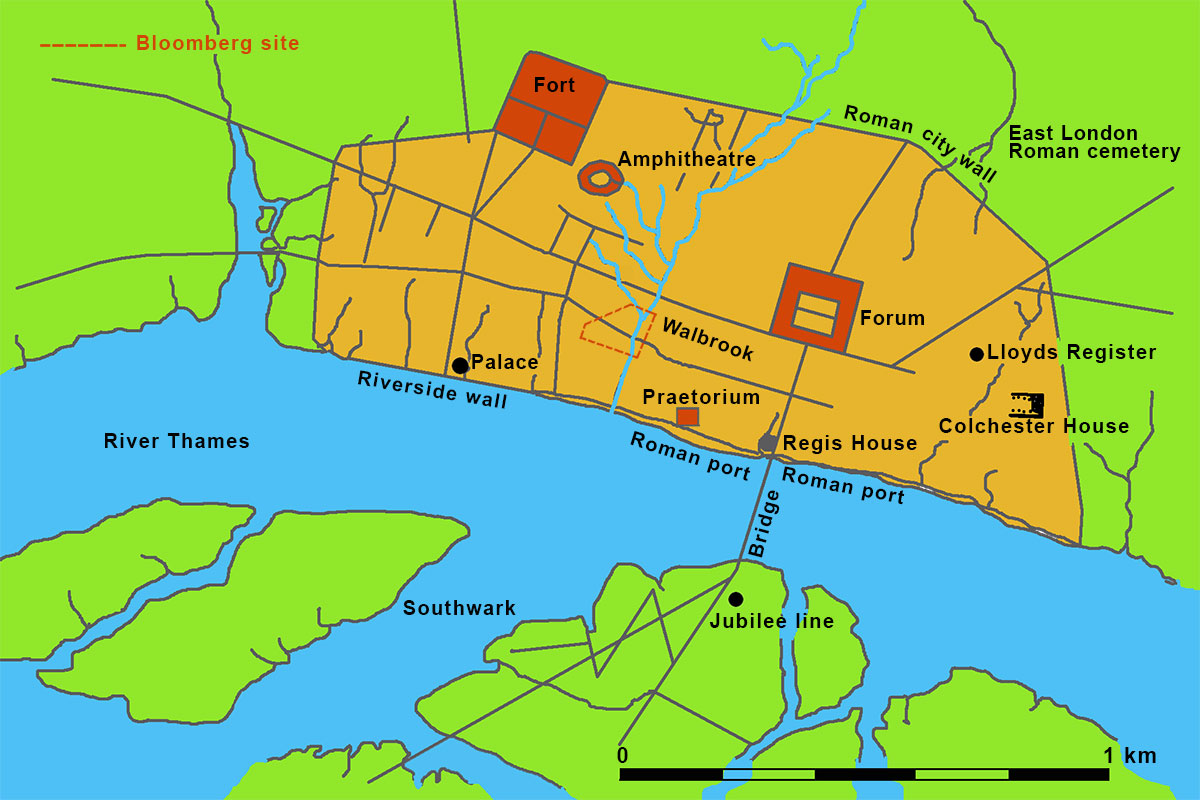
Londinium was built by the Romans around 41-45 AD. on two small hills separated by the Walbrook River on the north bank of the River Thames (see Figure 3).
In 1952, professor W.F. Grimes, at that time director of the London museum, had the opportunity to investigate this site, which was bombed during the Second World War, before Bucklersbury House was built. The excavations soon revealed a Roman temple of Mithras8. The temple, dates from around 245 AD., was rebuilt several times before eventually taken over by another cult, probably that of Bacchus. The shrine was dismantled and, after Bucklersbury House was built, rebuilt outside the building at street level, accessible to everyone.
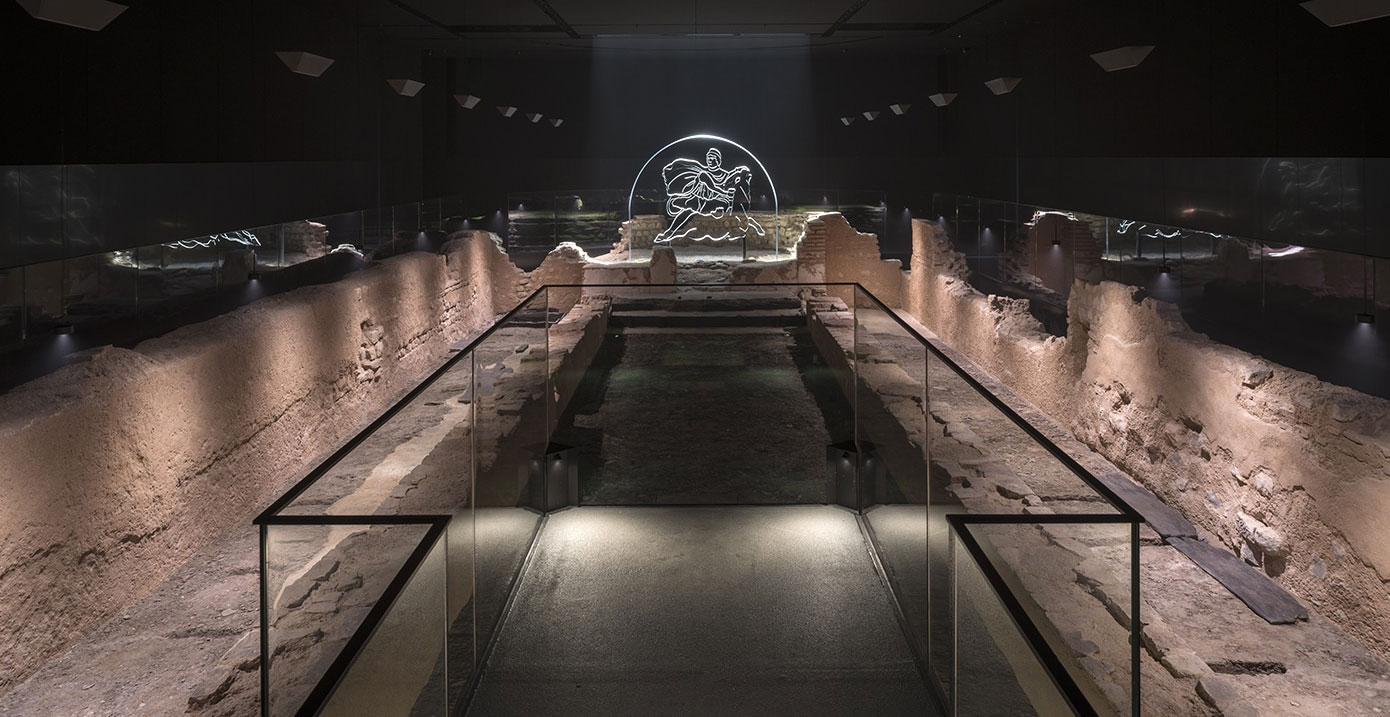
At the beginning of this millennium, the land was bought by the Bloomberg organization to build its European headquarters. Once again it was possible to do archaeological research on the building site, but now with the most modern techniques. The excavations were carried out between 2010 and 2015. A lot of earthenware, glass, coins and textiles was found during the new excavations. In addition, 405 stylus writing tablets were found, two stylus labels and two ink tablets. Of these stylus writing tablets, 80 have more or less readable text that gives us a good picture of the business, financial and trade aspects of life in the Roman port city of Londinium, before and after the destruction of Boudica in 60 AD 10.
The following chapter will tell us more about these personal messages from the beginning of the first century, the beginning of the Roman port city of Londinium. By the way, after the Bloomberg head office was built, the Mithreum was restored to its original location below the building, 7 meters below the current street surface.
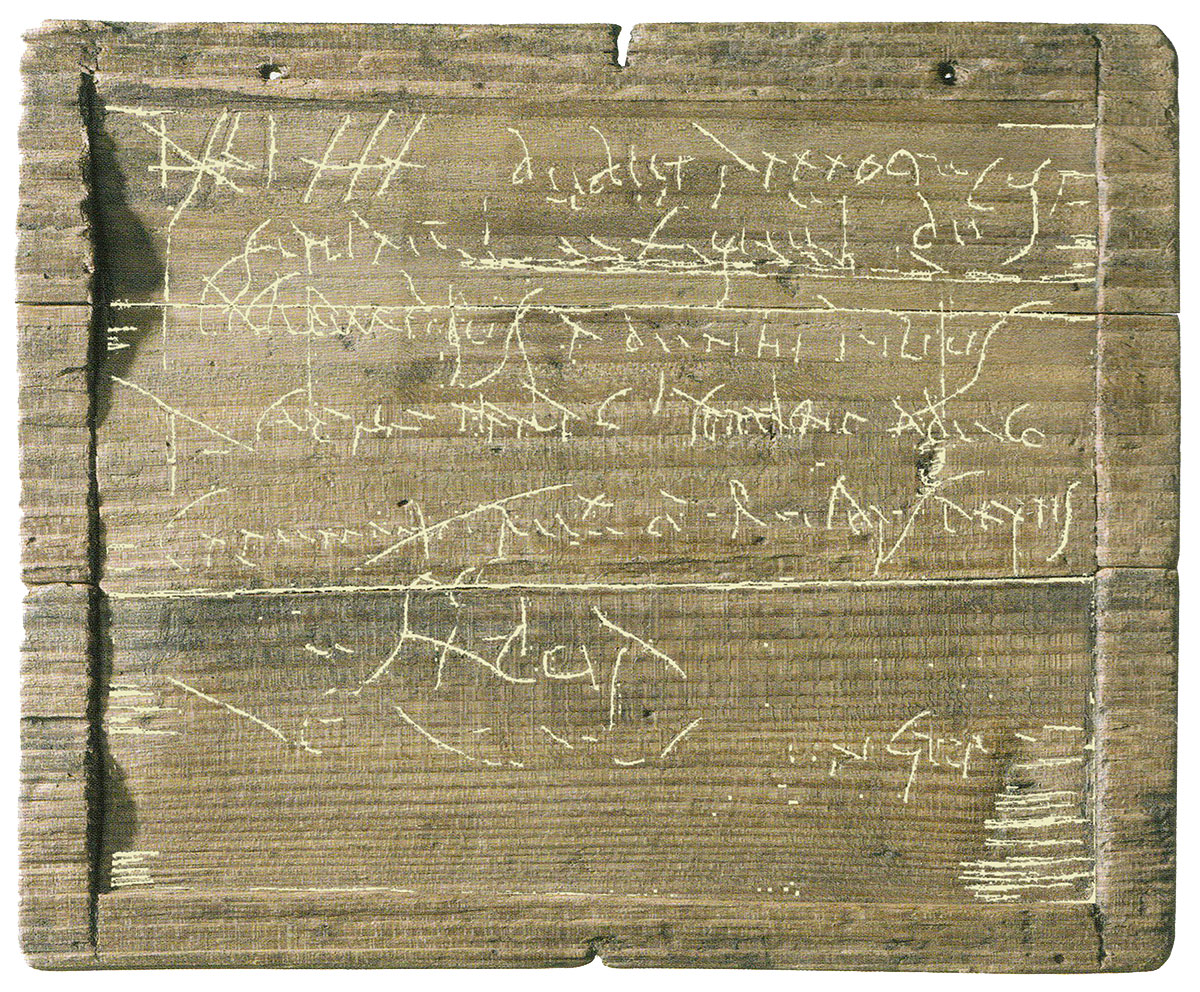
ROMAN LONDON SPEAKS
That only a few of the 405 tablets are legible is due to the nature of the tablets. Stylus writing tablets (tabula cerata) are, as already mentioned, provided with a wax layer. The advantage was the possibility to reuse the tablet and to make corrections. You could easily erase the text and use the tablet for a new message.
The wax (cera) was explicitly beeswax. Normally a black wax was used, but according to Ovid, a Roman poet from around the beginning of our era, when a girl sent a tablet with a negative message to her friend the wax must have been collected by Corsican bees from hemlock, mixed with vermilion, making the wax red like blood 12.
The wax layer in which the text was written has almost completely disappeared. How do we know what was written? A message was scratched with a steel pen (stylus) in the black wax on the light wood of the tablet. Over time the wax was lost, but the scratches in the wood are still visible, albeit vague. The problem with this is that the tablets, as stated, were used several times, so that the different messages on the wood run together. This makes it often impossible to keep the different texts apart.
Another problem with deciphering is the use of an italic script in Latin. But first, let's see what the boards looked like.

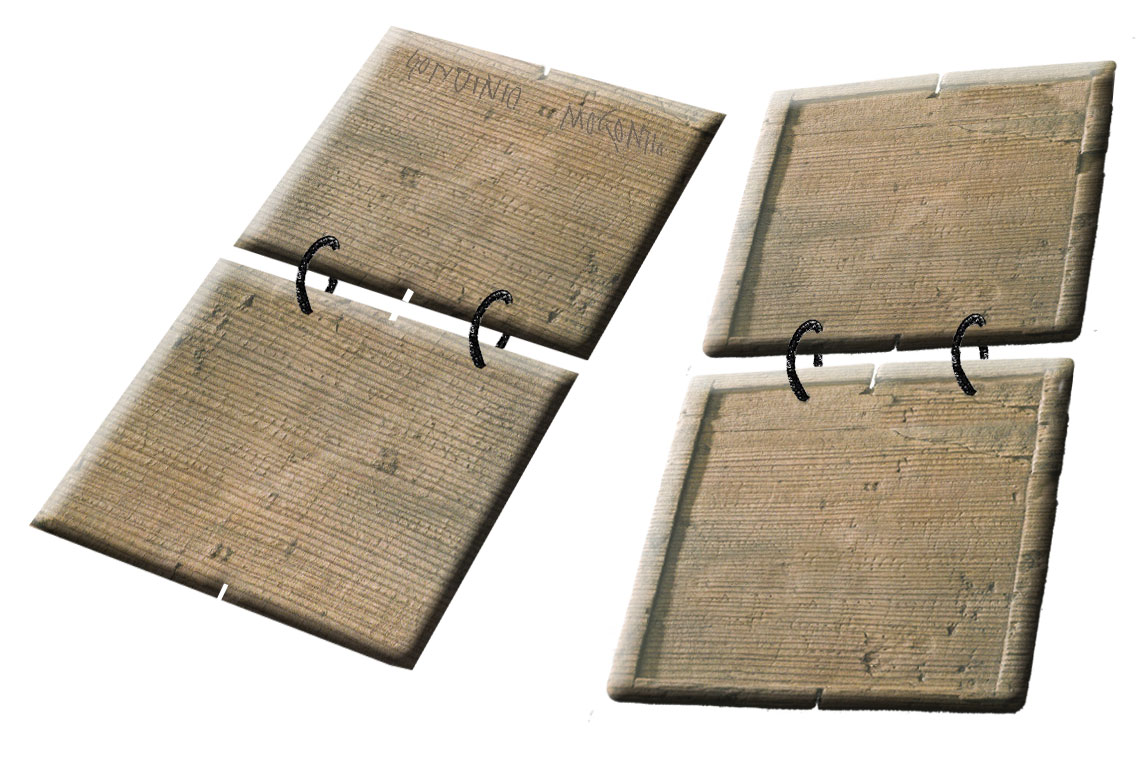
The tablets could be made from various types of wood. However, most were made from the fir. This wood is light in color and contrasted well with the black wax. Most of the wood for the Bloomberg tablets was not local but imported. In addition to the tablets, many other objects that were made from wood from the fir were found, such as casks and barrels. Many of the tablets were made of recycled wood from these casks and barrels.
The relatively small tablets were deepened on one or two sides to protect the layer of wax. The standard version was a set of two boards, their outside was flat and the inside deepened. These tablets were connected to each other, with the recessed sides with the wax on the inside to protect the wax layers. In both tablets had a notch for a cord with which the tablets were tied.
Around 129 names have been found on the Bloomberg tablets so far, but this number is by no means certain. Most of the tablets date from the period after the destruction of Londinium by Boudica, but some tablets from before that period and from the period of reconstruction have been found.
Examples of texts
Various tablets are provided with an address on the outside, scratched with a thicker needle directly into the wood, as on the preserved part of this tablet (WT6): LONDINIO MOGONTIO (In London to Mogontius).

Or this fragment where you can read in capital letters on the outside: DABES IUNIO CUPARIO CONTRA CATULL (You will give [this] to Junius, the cooper, opposite [the house of] Cattullus).

As already mentioned, many tablets have been reused, even after they were broken. In order to keep them together, new notches were made, such as in this fragment where on the inside a piece of text remained legible.
(NB Because the texts, written in wax, are difficult to read without special techniques, the texts on these tablets are also represented graphically)
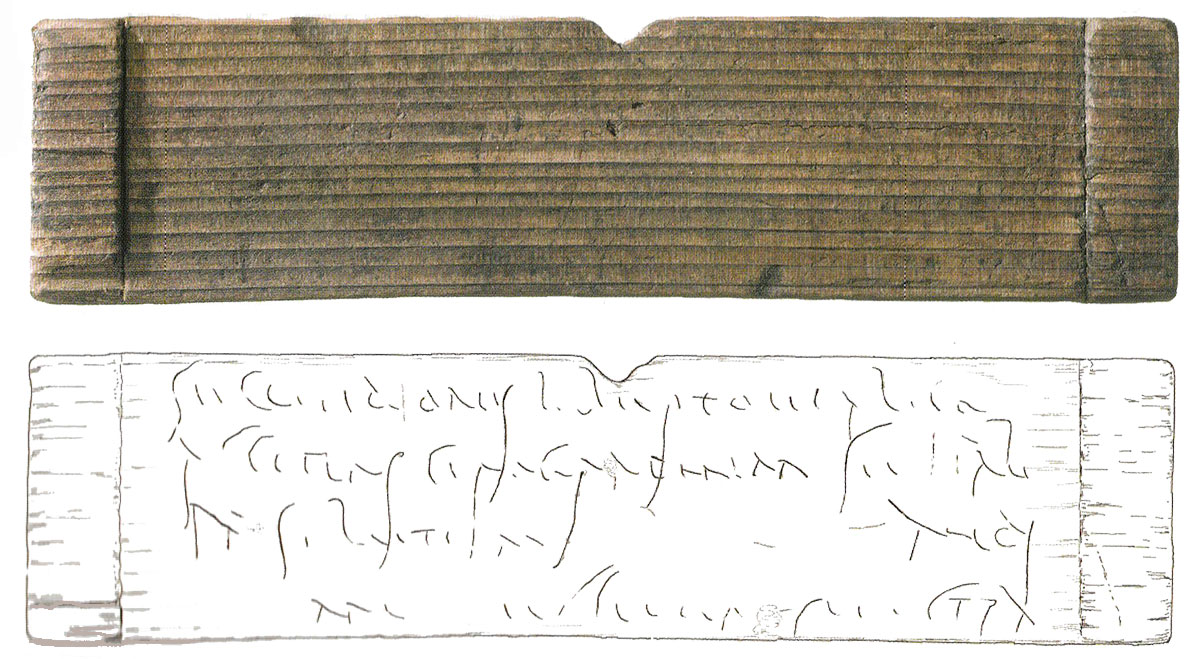
|
Secundionis liberto Vialico |
To Vialicus, the freedman of Secundio, greetings. Would you receive the note of hand of the slave of ?Marcus Salvius M[…}… |
The above text clearly shows the degree of difficulty that the researchers and translators were confronted with. Only with highly advanced techniques and special exposure methods fragments of texts could be detached from the multitude of traces of writing and deciphered. Thus the written voices from the early years of the Roman port city of Londinium are saved from oblivion again.
|
Taurus [[Taurinus]] Macrino domino |
Taurus (written over Taurinus) to Macrinus his dearest lord, greetings. …In good health … when Cattarius had come and had taken the beasts of borden away, investments which I cannot replace in three months. ?Yesterday I was at (the house of) Diadumenus, but he (Catarrius) arrived unexpectedly for a single day…. |
This start of a message is written on the first innerside of Stylus tablet WT29. The rest of the letter has been lost. In fact, Taurus or Taurinus (which name first appeared and apparently had been corected cannot be traced) complains to Macrinus because Catarrius took his beasts of burden, which he could not repay within three months, when he himself was not at home but at the house of Diadumenus. Catarius came unexpectedly and immediately left the same day.
The following text is from the only legible tablet from the period 43-53 AD. thus dating from before the destruction by Boudica. Only the lower part of the tablet with the text has been preserved. So the text starts in the middle of the message and may imply that London already had a marketplace in those days.
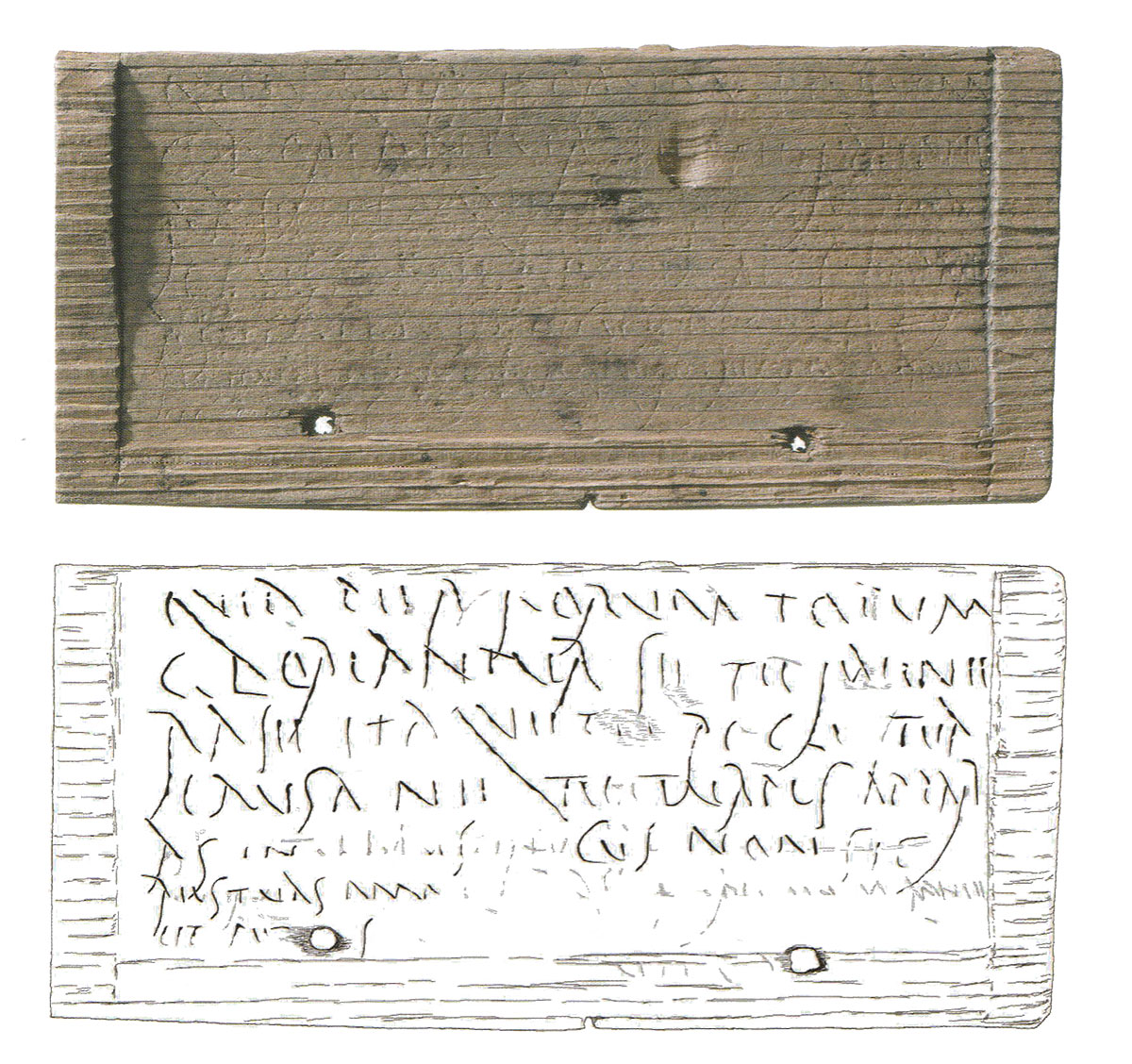
.....quia per forum totum
gloriantur se te faene-
ras<s>e itaque te rogo tua
causa ne tu turpis appar-
as in …cus non sic
res tuas ?ama[bis] et put[a]s …….
……because they are boasting through the whole market
that you have lent them money.
Therefore I ask you un your own interest
not to appear
shabby
You will not thus favour your own affairs.....
The text on the above tablet is written over an older text. On the flat back there is a short address: dabis Tito auiarius or You will give this to Titus….
The tablet is 127.4 mm wide and 58.7 mm high.
The tablets were also issued as a confession of debt:
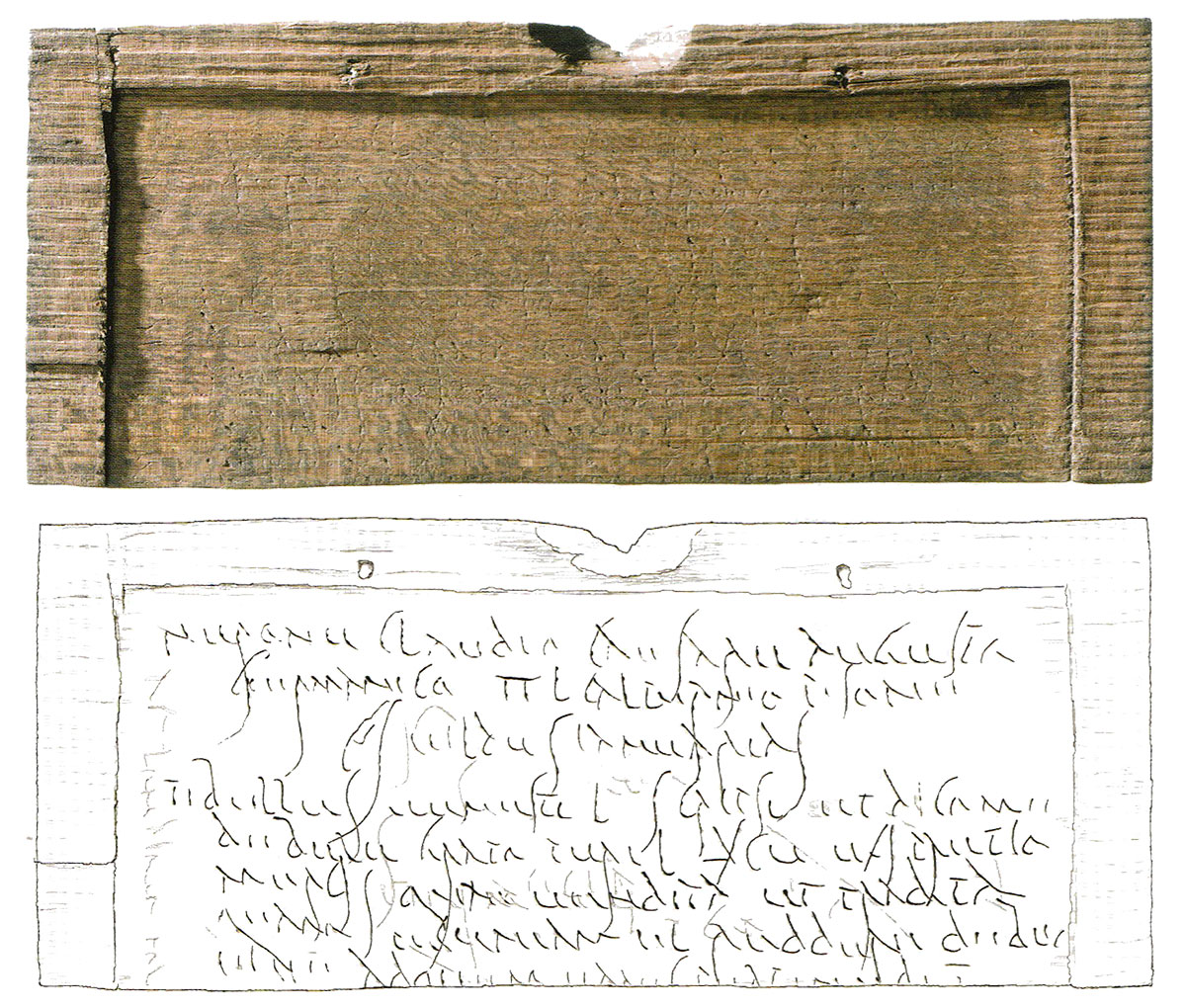
Nerone Claudio Caesare Augusto
Germanico ii L(ucio) Calpurnio Pisone
co(n)s(ulibus) ui Idus Ianuarias
Tibullus Venustri l(ibertus) scripsi et dico me
debere Grato<S> puri l(iberto)(denarios -
ex{s} pretio
mercis quae uendita et tradita
quam percuniam ei reddere debeo
eiue ad quem ea res pertinebit
In the consulship of Nero Claudius Augustus Germanicus for the second time and of Lucius Calpurnius Piso, on the sixth day before the Ides of Januari (8 Januari AD 57.), I, Tibullus the freedman of Venustus, have written and say that I owe Gratus, the freedman of Spurius 105 denarii from the price of the merchandise he has been sold and delivered.
This money I am due to repay him or the person whom the matter will concern….
This confession was written before Boudica (AD 53-60) and less than 14 years after the Roman invasion, showing that the Roman historian Tacitus was right when he wrote about copia negotiatorum et commeatuum maxime celebre 13 (….a city full of traders and merchandise).
The width of the tablet is 142.0 mm and the height 81.0 mm
Also this tablet from 62 AD. , the last we describe, has to do with the trade that prospered in the early years of London. This is a trade agreement:
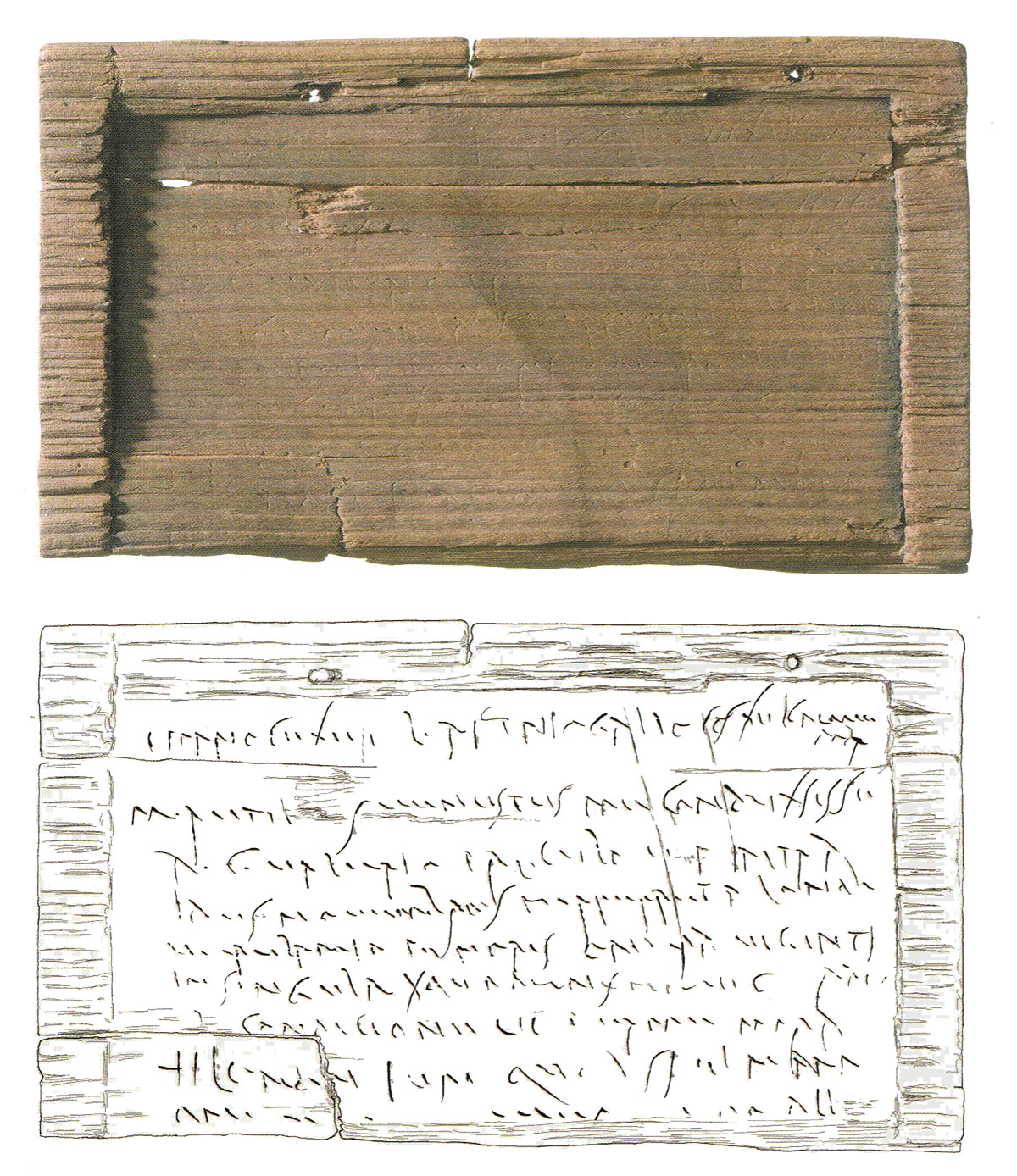
P(ublio) Mario Ce L(ucio) Afinio Gallo -
co(n)s(ulibus) xii Kal(endas) Noue’mnbr(es)’
M(arcus) Renn[iu]s Venustus me condux{s}isse
a C(aio) Valerio Proculo ut intra
Idua Nouembres perferret a [[Londi]]
Verulamio penoris onera uiginti
in singula (denarii) quadrans uecturae
ea condicione ut per me mora
(asses) i Londinium quod si ulnam
om[n]e[m]……
In the consulship of Publius Marius Celsus and
Lucius Afinius Gallus, on the 12th day before
the Kalends of November (21 Oktober AD 62).
I, Marcus Rennius Venustus, (have written and say) have contracted with Gaius Valerius Proculus that he bring from Verulamium
on the Ides of November (13 November) 20 loads
at a transport charge of
¼ denarius for each, on condition that….. one at…..to Londen;
but if…. The whole…..
The tablets whose texts are unraveled are bundled in the book "Roman London's first voices, writing tablets from the Bloomberg excavations, 2010-14" published by MOLA (Museum of London Archeology). In the book you will also find background information about the excavations themselves and an extensive explanation by the decipherers of the tablets how, despite the many writing errors and corrections by the Roman writers, they have come to present a piece of personal correspondence from the early years of the Roman port city of Londinium.
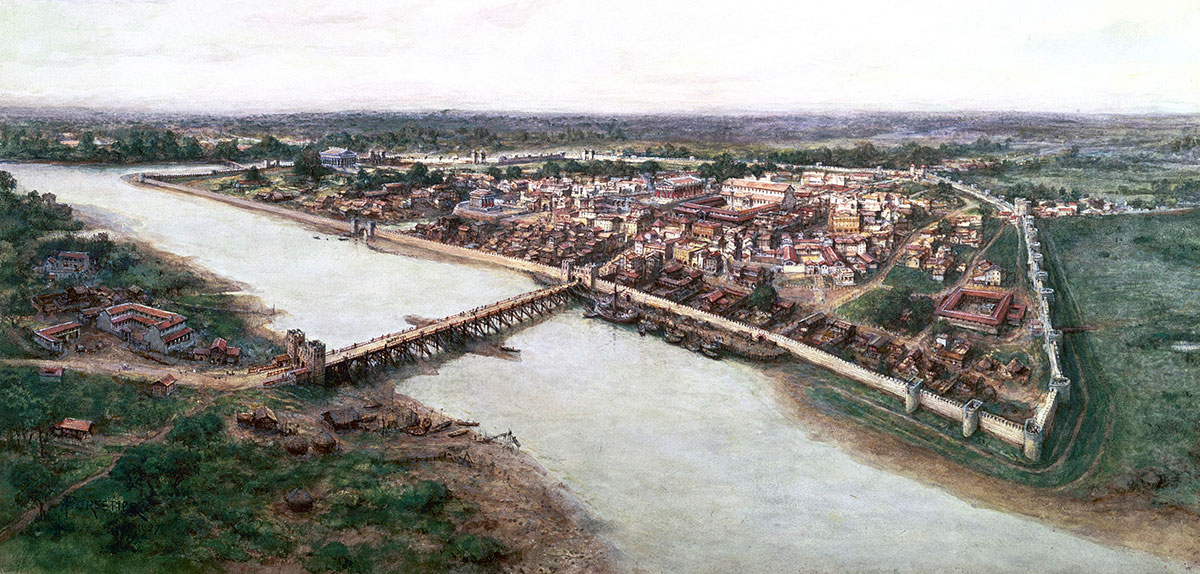
Bronnen- Vindolanda Tablets Online - http://vindolanda.csad.ox.ac.uk/
- Roman London’s first voices, writing tablets from the Bloomberg excavations, 2010-14; MOLA
Notes- 1: Read article 'A place without fear'
- 2: Read article 'The collegium, the Roman guild'
- 3:Photo: Library University of Michigan – ZPE 18 (1975)
- 4:Between 122 and 128 AD the emperor Adrian built a 117 km long wall in Britannia, as part of the limes (a defensive fortification in the Roman province of Britannia
- 5: Photo: Fae (Wikipedia)
- 6:Vindolanda Tablets Online - http://vindolanda.csad.ox.ac.uk/
- 7:Photo: Mramoenma-Wikipedia
- 8:More about Mithras read our article: 'The last excavated Mithras sanctuarium'
- 9:Photo: https://secretldn.com/roman-temple-london-mithraeum-bloomberg/
- 10:Read our article ‘Londinium – Londen’
- 11:The text on this tablet has been made more legible.
- 12:Am 1.12, II 8-10
- 13:Tacitus (56 -120 AD) Ann 14.33






 We are committed to providing versions of our articles and interviews in several languages, but our first language is English.
We are committed to providing versions of our articles and interviews in several languages, but our first language is English.